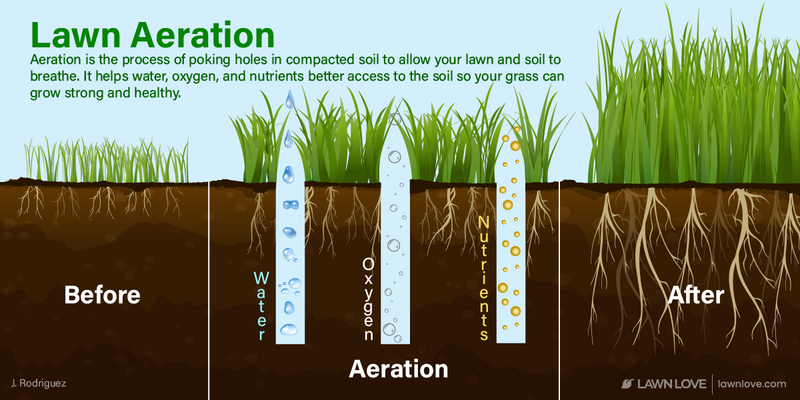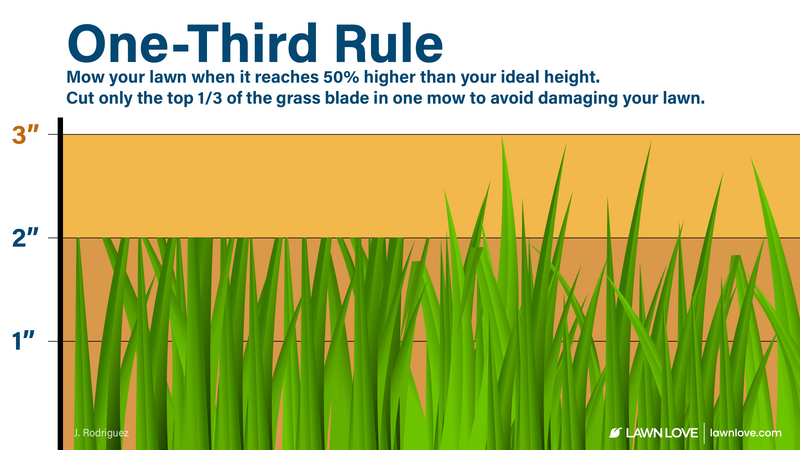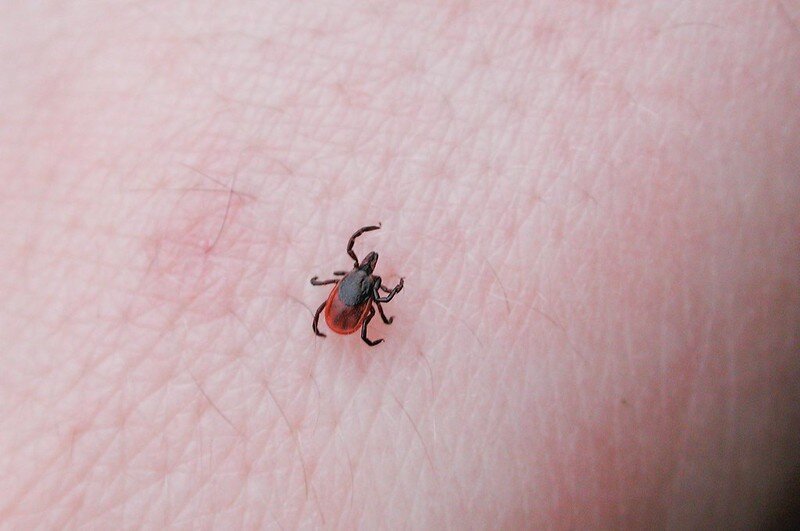
Springtime in Durham is the time for March Madness, azaleas coming into bloom, and a return to some of our favorite activities along the Eno River. It’s also the perfect time to whip your lawn back into shape.
So how can you rejuvenate your frost-bitten lawn and restore its lush, healthy green appearance? Follow these 10 spring lawn care tips.

1. Tune up your lawn care equipment
Have your lawn tools been hibernating in the garage all winter? Spring is the time to tune them up. If you aren’t into DIY, there are a number of qualified lawn care repair and maintenance shops located in the Durham area.
Push lawn mowers: Replace the spark plugs, change air filters, replace the fuel filter, change the oil, fill with fresh gas, clean the underside of the mower, and sharpen the blades
Riding lawn mowers: Check your tire inflation, check belts for cracking or fraying, change the oil, clean the mower deck, sharpen the blade, and fill with fresh gas
Battery-powered lawn mowers: Sharpen the blade, and charge the battery (If the battery doesn’t come to a full charge, you’ll want to replace it; battery life is typically four to five seasons)
Edgers: Replace line, check shield, replace spark plug, replace air filter, fill with fresh gas/oil, check straps and handle, and check cord for cracks (electric trimmer)
Leaf blower: Clean the blower, check air filter, replace fuel filter, check spark plug, add fresh oil, check battery (cordless blowers)
Hedge trimmers: Clean trimmer, check machine for leaks, sharpen blade, check spark plugs, clean or replace air filter, add new fuel, check battery and cord (on electric trimmer)

2. Clean up yard debris
Now that your lawn care equipment is ready for the new season, it’s time to go to work. As soon as the last frost hits and temperatures stay above freezing, you should begin your spring yard cleanup. Follow this checklist below, and you’ll be well on your way to hosting those beloved North Carolina backyard barbecues and garden parties.
- Remove any debris cluttering your lawn, including fallen branches, twigs, and pet waste.
- Rake leaves when your grass is dry. Raking over wet grass can lead to bald spots.
- Prune and trim your trees, shrubs, and hedges being sure to remove any dead or diseased branches.
- Clear your garden beds of weeds, fallen limbs, leaves, and dead foliage.
- Pressure wash your patios, decks, walkways, and siding but tackle this after tree pollen season ends, which generally runs until about late April to early May.

3. Test your soil
Soil testing can help you determine nutrient deficiencies so you can amend your soil to support grass and plant growth. It will measure primary nutrients like nitrogen, phosphorus, and potassium, and also secondary nutrients and micronutrients.
Soil testing is the only way to find out the pH of your soil, which measures acidity or alkalinity. Your soil’s pH determines how well your soil can absorb nutrients. Even though most turfgrasses thrive in soils with a pH level between 5.0 and 7.0, each grass type is different.
For North Carolina residents, soil testing is free from April to November through a North Carolina State University program.

4. Treat lawn diseases
April showers bring pretty May flowers, but they can encourage lawn diseases. With rising temperatures and humidity, your lawn is at risk of some of the most common North Carolina lawn diseases.
Dollar spot
Signs of dollar spot: Small circles of tan, white, or straw-colored patches of grass that are generally around the size of a half-dollar but can grow up to over 6 inches in diameter. Dollar spot is a fungus that becomes active when the temperatures at night reach 50 degrees or more. Heavy dew and consistently wet weather also encourages its growth.
How to treat dollar spot: To prevent dollar spot, practice good lawn care by watering before 10 a.m., mowing at the proper height, applying adequate nitrogen fertilizer, and removing excessive thatch. To treat it, combine good lawn care treatments with fungicides
Brown patch
Signs of brown patch: Brown patch appears as large brown, tan, or yellow circular patches of turf ranging anywhere from 6 inches to many feet in diameter. Similar to dollar spot, brown patch thrives on wet lawns.
How to treat brown patch: Take a leaf rake and fluff the grass where there is brown patch to help the grass dry, and avoid excessive shade. Mow to the proper height, and use proper irrigation practices. Fungicides also can also be used to treat brown patch.
Large patch
Signs of large patch: Large patch is a fungal disease similar to brown patch except it only affects warm-season grasses like centipedegrass, Zoysiagrass, St. Augustinegrass, and bermudagrass in the spring. Large, discolored patches can grow up to 25 feet in diameter.
How to treat large patch: Prevention is key to avoiding large patch. Proper watering, mowing, and fertilizing and other management practices will prevent it from taking over your lawn. Fungicides are effective for large patch control, but they must be applied on a preventative basis. For more tips on how to prevent and control large patch, check out this helpful NCSU guide.
Fairy ring
Signs of fairy ring: They may sound cute, but these odd looking fungi appear as large, dark green circles or rings of mushrooms. Fairy ring is a highly invasive lawn disease can grow well over 100 feet in diameter.
How to treat fairy ring: Like most lawn diseases, this fungi needs excess moisture, infertile soil, and a damaged lawn to thrive. If you see fairy rings in your lawn, you should apply nitrogen-rich fertilizer, dethatch the lawn, aerate, and maintain proper watering techniques. Select fungicides also can help control fairy ring.

5. Do not over fertilize
Fertilizers are made up of three primary nutrients — nitrogen, phosphorus, and potassium, abbreviated as “N-P-K.” If a fertilizer says it has 24-6-6, it means the content is 24% nitrogen, 6% phosphorus, and 6% potassium.
Many homeowners apply too much fertilizer when their grass starts to grow. However, fertilization amounts really depend on your specific grass type and soil test results.
For more info on how and when to properly fertilize your lawn based on your grass type, check out these best practices listed on NCSU’s website. Here is good fertilization schedule to follow based on grass type:
| Grass type | Recommended fertilization |
| Bermudagrass | Early April-May |
| Centipedegrass | June |
| Kentucky bluegrass mix | Mid September-November |
| Tall fescue | Mid September-November |
| Zoysiagrass | June-August |

6. Prevent and treat weeds
To prevent spring weeds from sprouting, apply a pre-emergent herbicide around mid-March. Pre-emergent herbicides work by creating a protective barrier that contains chemicals that inhibit plant growth by preventing root growth, impeding cell division, and ensuring nutrients won’t reach weeds.. They do not kill existing weeds.
For weeds that have already sprouted, a post-emergent herbicide can be an effective treatment. The best time to apply it is in early to late spring. The granules or liquid contain a combination of chemicals that kill the weed and prevent them from growing back.
Post-emergent herbicides can be “selective” or “non-selective.” Selective herbicides will kill some plants and not others. Non-selective herbicides can kill or damage most plants, including your grass.
Some common weeds found in Durham lawns:
- Yellow nutsedge
- Dandelion
- White clover
- Henbit
- Chickweed
- Crabgrass
For help determining what type of herbicide will work best for your lawn, check out this helpful guide put together by NCSU.

7. Aerate
When you aerate your lawn, you relieve soil compaction, improve drainage and improve the growth of your grass by allowing water, oxygen and nutrients to reach the soil.
Core aeration and spike aeration are the two main methods to aerate your lawn. Core aeration is the preferred method and is done by poking hollow tines into the ground and extracting plugs of soil.
Aerate warm-season grasses such as bermudagrass, Zoysiagrass, and centipedegrass in late spring to allow for healthy growth during the coming summer months. Since spring is when these grass types actively grow, this is the best time to aerate.
For cool-season grasses such as fescues and Kentucky bluegrass, you will want to wait until fall to aerate your lawn when the grass is actively growing.

8. Overseed bare spots
To keep your lawn lush and healthy, it’s important to overseed bare patches. Overseeding is spreading new grass seed over your existing lawn.
For warm-season grasses (bermudagrass, centipedegrass, Zoysiagrass): Dead or damaged grass should be reseeded in late spring through early summer.
For cool-season grasses (Kentucky bluegrass and tall fescue): Overseeding is best late summer through early fall when the high temperatures are between 70 and 80. If you wait until October there is an increased likelihood of slow germination.
For proper development and growth, be sure to water your lawn thoroughly — newly developing grass seeds are very thirsty. Sunny areas of your lawn will need about two to three light waterings a day during germination.

9. Do not mow too short
Different grass types require different mowing heights. For best results, never mow your lawn before the grass reaches 2 inches and never cut more than one-third of the grass’s height at a time.
You also never want to mow the lawn when it’s wet, as this will damage your turf’s integrity and appearance. You can leave some grass clippings behind to serve as a natural fertilizer, but do not let heavy clippings build up on the lawn because it will create too much thatch.
Here are the recommended mowing heights for Durham grasses:
Bermudagrass: 1-2 inches (rotary mower) or 0.75-1 inch (reel mower)
Centipedegrass: 1.5-2 inches
Zoysiagrass: 1-2.5 inches
Kentucky bluegrass mix: Depends on the mix — anywhere from 1.5-3.5 inches
Tall fescue: 2.5-3.5

10. Prevent and control pests
The Piedmont region has some annoying pests that can wreak havoc on your lawn and garden if you don’t prevent and control them. As much time, energy, and money you put into your lawn, why let them ruin your investment and hard work?
Below, we’ve listed some common spring pests found in the Triangle area:
- Grubs
- Sod webworms
- Cutworms
- Ants
- Ticks
- Aphids
- Mole crickets
- Spittlebugs
- Chinch bugs
By preventing pests and controlling them in spring, you will have a healthy lawn the rest of the year.
The best pest prevention is proper lawn care. You want to make your lawn is unattractive to pests. You can do this by proper irrigation and fertilization. Mow at the recommended height for your grass type, and aerate and dethatch your lawn.
And when you do encounter pests, use selective pesticides that kill only the targeted pest. Using catch-all pesticides harm beneficial insects that prey on the pests you are trying to control.

Maintain your beautiful Durham lawn
The NC piedmont region is home to a plethora of attractive turfgrasses that add both curb appeal and value to your home. Just be sure to research your grass type so you know how to care for and maintain it throughout the spring and other seasons.
But if you’d rather spend your free time this spring cheering on the Durham Bulls or biking on the American Tobacco Trail, let the landscaping professionals at Lawn Love tend to your lawn care so you can spend more time enjoying spring in the Triangle.
Main photo credit: susannp4 | Pixabay